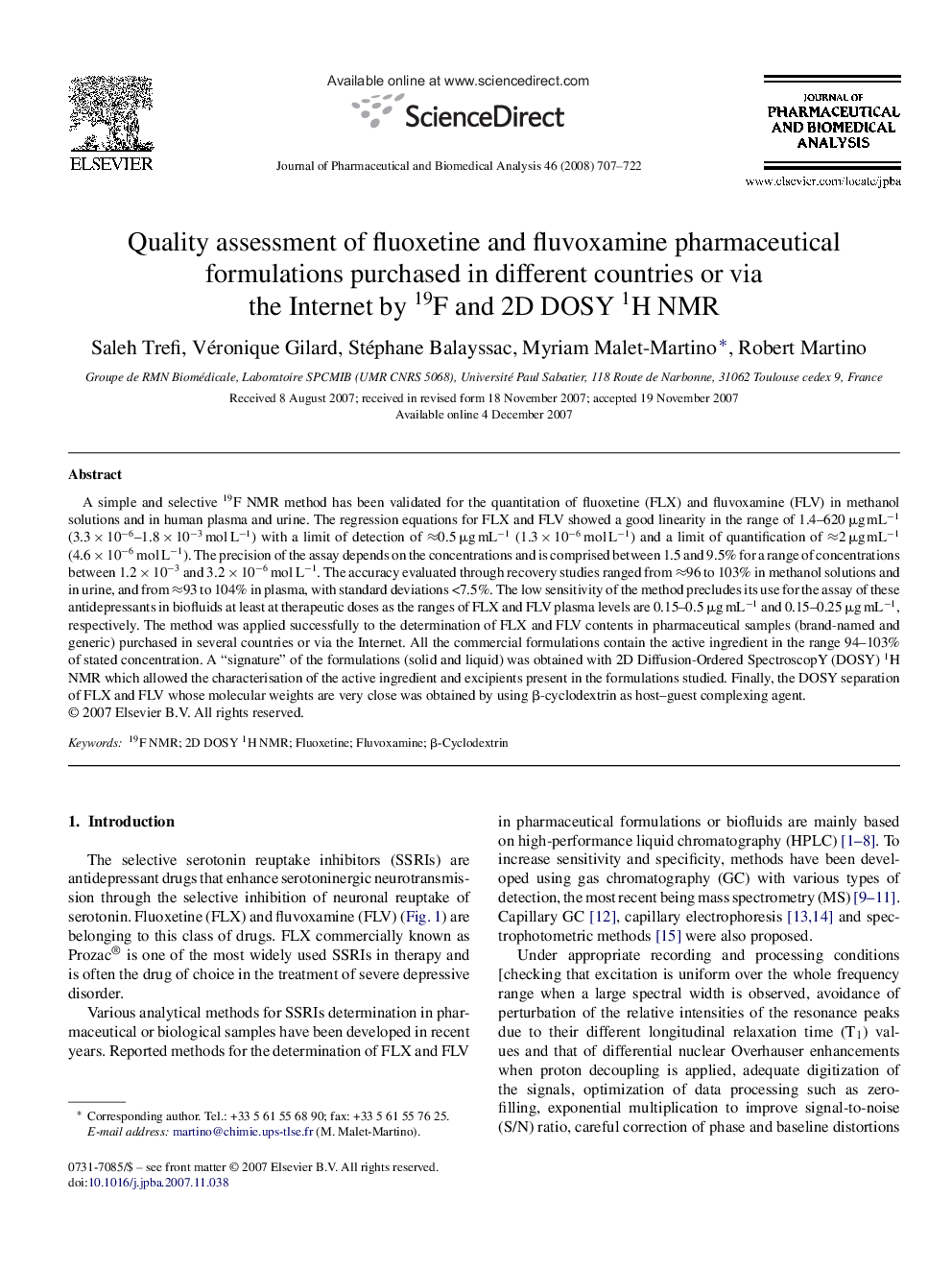| Article ID | Journal | Published Year | Pages | File Type |
|---|---|---|---|---|
| 1224159 | Journal of Pharmaceutical and Biomedical Analysis | 2008 | 16 Pages |
A simple and selective 19F NMR method has been validated for the quantitation of fluoxetine (FLX) and fluvoxamine (FLV) in methanol solutions and in human plasma and urine. The regression equations for FLX and FLV showed a good linearity in the range of 1.4–620 μg mL−1 (3.3 × 10−6–1.8 × 10−3 mol L−1) with a limit of detection of ≈0.5 μg mL−1 (1.3 × 10−6 mol L−1) and a limit of quantification of ≈2 μg mL−1 (4.6 × 10−6 mol L−1). The precision of the assay depends on the concentrations and is comprised between 1.5 and 9.5% for a range of concentrations between 1.2 × 10−3 and 3.2 × 10−6 mol L−1. The accuracy evaluated through recovery studies ranged from ≈96 to 103% in methanol solutions and in urine, and from ≈93 to 104% in plasma, with standard deviations <7.5%. The low sensitivity of the method precludes its use for the assay of these antidepressants in biofluids at least at therapeutic doses as the ranges of FLX and FLV plasma levels are 0.15–0.5 μg mL−1 and 0.15–0.25 μg mL−1, respectively. The method was applied successfully to the determination of FLX and FLV contents in pharmaceutical samples (brand-named and generic) purchased in several countries or via the Internet. All the commercial formulations contain the active ingredient in the range 94–103% of stated concentration. A “signature” of the formulations (solid and liquid) was obtained with 2D Diffusion-Ordered SpectroscopY (DOSY) 1H NMR which allowed the characterisation of the active ingredient and excipients present in the formulations studied. Finally, the DOSY separation of FLX and FLV whose molecular weights are very close was obtained by using β-cyclodextrin as host–guest complexing agent.
